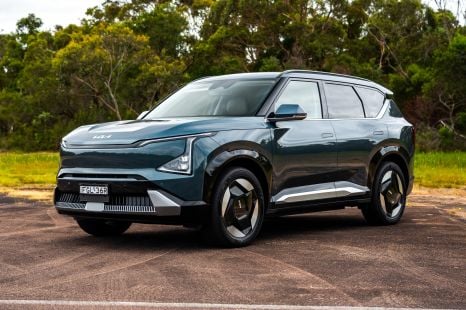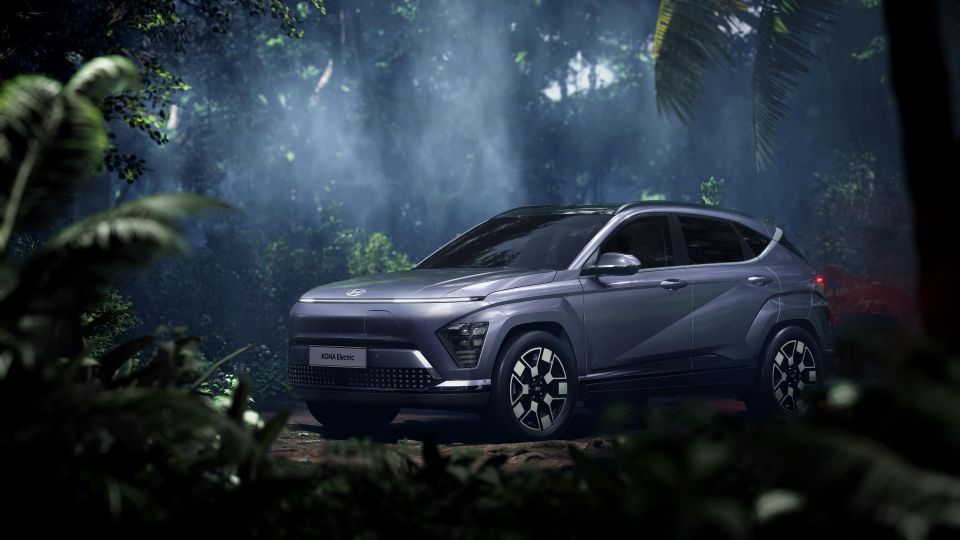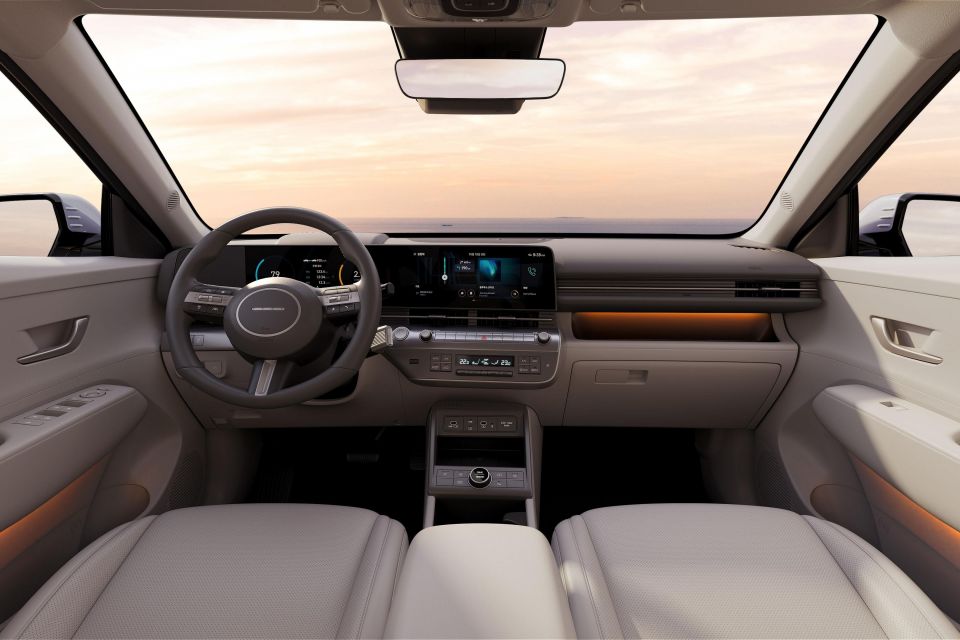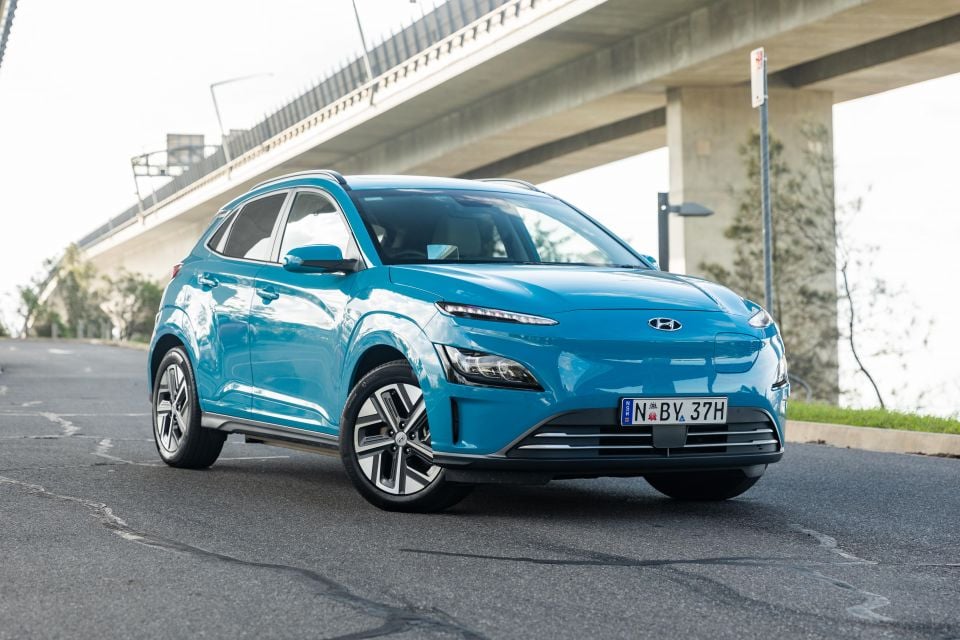

James Wong
2025 Kia EV5 Earth AWD review
29 Days Ago

Senior Contributor
A second generation of one of Australia’s top-selling electric vehicles will arrive in showrooms during the fourth quarter of 2023.
The second-gen Hyundai Kona Electric will land a few months after the 1.6-litre turbo and 2.0-litre naturally aspirated petrol-powered versions due mid-year.
The Kona Electric will, however, touch down about the same time as the new Kona petrol-electric hybrid – to be offered in Australia for the first time after missing the cut in its first generation.
Unlike Hyundai’s Ioniq 5 and 6 models, the Kona is thereby engineered on a platform designed to handle combustion, electrified, and pure electric running gear.

Hyundai’s new-look Kona is quite a different car to the outgoing model, which launched back in 2017.
Most importantly it is 145mm longer overall and 60mm longer between the wheels, making it more practical inside, with a claimed 30 per cent bigger boot.
Stylistically the EV variant is differentiated by its so-called ‘Pixelated Seamless Horizon Lamps’, being the first Hyundai model to apply this flourish.
Inside are two 12.3-inch screens for instruments and multimedia display – the centre touchscreen supporting over-the-air updates – and more ergonomic seats.

Hyundai will also make available its Remote Smart Parking Assist, which allows you to move the vehicle using the key fob. Digital Key 2 Touch accessibility uses near-field communication to allow you to lock, unlock or start the Kona using either a smartphone or smart watch.
Expect a quieter ride due to double-laminated sound-insulating glass, sound-absorbing tires, and a new floor-carpet under-pad.
In terms of the 2024 Kona Electric’s mechanicals, Hyundai tells us it will disclose full details in March. It could be looking to do a full reveal of the crossover at the Seoul Mobility Show which will run from March 30.

The outgoing model comes with 39kWh standard range and 64kWh long range batteries, with respective driving ranges of 305km and 484km in WLTP testing. Respective motor power outputs are 100kW and 150kW, both offering torque of 395Nm.
While we don’t know what will change for the new Kona Electric, the related new-generation Kia Niro EV offers a slightly larger 64.8kW long range battery, while its motor torque has been pared back to 255Nm – thereby enhancing efficiency and reducing wheelspin.
When the new Kona EV arrives around October 2023, it will rival the Kia Niro, BYD Atto 3, Cupra Born, MG ZS EV, Volvo C40 and Renault Megane E-Tech.
Australian EV market
Sales of electric cars across Australia nearly doubled in 2022 to 33,410 vehicles, equal to about 3.0 per cent of the total new vehicle market.

The outgoing Kona Electric was Hyundai’s most popular EV here, with 1096 deliveries making it the sixth most popular EV overall.
By combining sales of Kona, Ioniq 5 and Ioniq, Hyundai delivered 2432 EVs to Australians last year, placing it second on the EV sales charts sorted by brand behind Tesla (19,954) but ahead of BYD (2113) and Polestar (1554).
| Model | 2022 Sales |
|---|---|
| Tesla Model 3 | 10,877 |
| Tesla Model Y | 8717 |
| BYD Atto 3 | 2113 |
| Polestar 2 | 1524 |
| MG ZS | 1119 |
| Hyundai Kona | 1096 |
| Volvo XC40 | 983 |
| Hyundai Ioniq 5 | 756 |
| Mercedes-Benz EQA | 624 |
| BMW X3 | 593 |
| Hyundai Ioniq | 580 |
| Kia EV6 | 564 |
| Volvo C40 | 491 |
| BMW iX | 477 |
| Mini Hatch | 455 |
| Porsche Taycan | 430 |
| Kia Niro | 385 |
| Nissan Leaf | 331 |
| Mercedes-Benz EQC | 318 |
| BMW i4 | 207 |
| Mercedes-Benz EQB | 141 |
| Audi e-tron SUV | 129 |
| Genesis GV60 | 114 |
| Lexus UX | 82 |
| Mercedes-Benz EQS sedan | 70 |
| Mazda MX-30 | 55 |
| Renault Kangoo | 49 |
| Genesis GV70 | 44 |
| Jaguar I-Pace | 23 |
| Genesis G80 | 16 |
| Audi e-tron GT | 13 |
| BMW i7 | 13 |
| Mercedes-Benz EQV | 10 |
| LDV Deliver 9 | 5 |
| BMW i3 | 3 |
| Mercedes-Benz Vito | 3 |
| LDV MIFA 9 | 2 |
| LDV T60 | 2 |
| Cupra Born | 1 |
| Ford Transit | 1 |
MORE: Everything Hyundai Kona
Where expert car reviews meet expert car buying – CarExpert gives you trusted advice, personalised service and real savings on your next new car.


James Wong
29 Days Ago


CarExpert.com.au
23 Days Ago


Andrew Maclean
20 Days Ago


Paul Maric
12 Days Ago


Max Davies
10 Days Ago


William Stopford
7 Days Ago